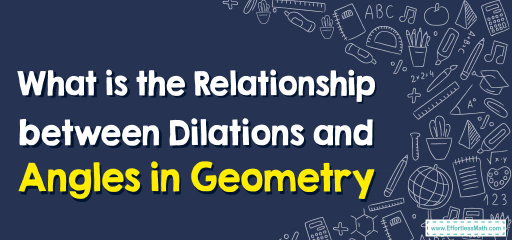What is the Relationship between Dilations and Angles in Geometry

Practice Questions:
- If \(\angle A\) in Triangle \(ABC\) is \(40^\circ\) and Triangle \(DEF\) is a dilation of Triangle \(ABC\), what is \(\angle D\) in Triangle \(DEF\)?
- A pentagon \(ABCDE\) has \(\angle A = 108^\circ\). If Pentagon \(A’B’C’D’E’\) is a dilation of Pentagon \(ABCDE\), what is \(\angle A’\)?
- \(40^\circ\)
- \(108^\circ\)
Original price was: $27.99.$17.99Current price is: $17.99.
Original price was: $109.99.$54.99Current price is: $54.99.
Original price was: $109.99.$54.99Current price is: $54.99.
Related to This Article
More math articles
- 8th Grade FSA Math Practice Test Questions
- What Are the Applications of the Law of Cosines?
- Metric Units
- How to Manage Your Time Effectively on the Praxis Core Math Test?
- Discovering the Magic of SSS and SAS Congruence in Triangles
- How to Use Right-Triangle Trigonometry
- FTCE Math Practice Test Questions
- Write a Ratio
- Improper integrals: Everything A Beginner Needs to Know
- 4th Grade Comtail pointing downwardmon Core Math FREE Sample Practice Questions













What people say about "What is the Relationship between Dilations and Angles in Geometry - Effortless Math: We Help Students Learn to LOVE Mathematics"?
No one replied yet.